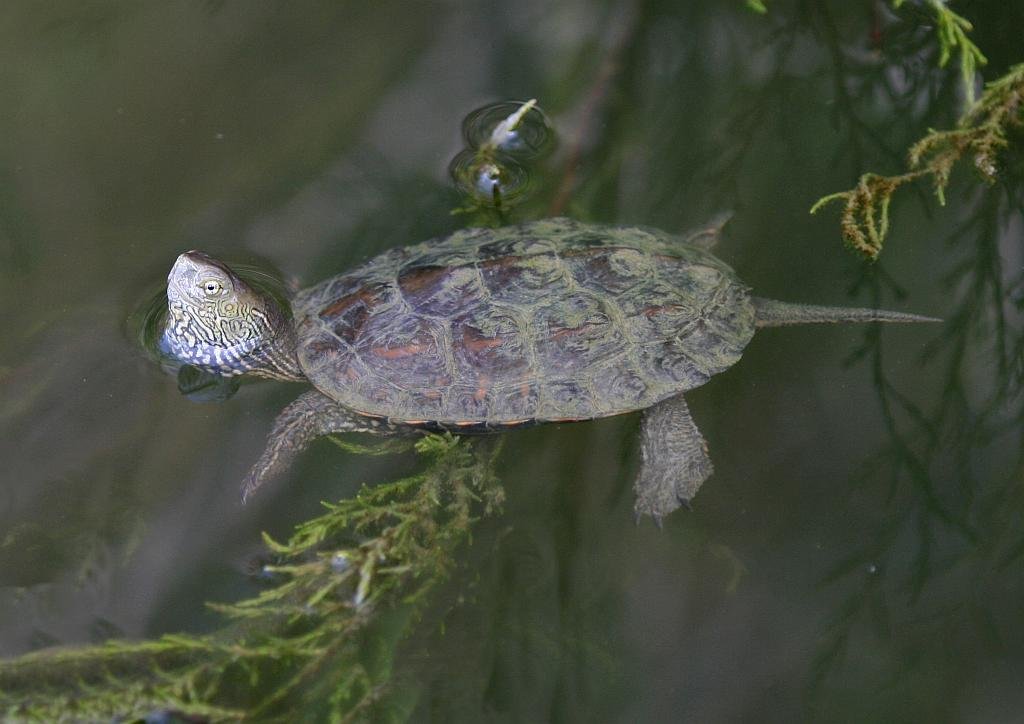- Spanish: Galápago leproso
- Scientific: Mauremys leprosa
- English: Mediterranean Pond Terrapin
- French: Émyde lépreuse
- German: Spanische Wasserschildkröte
- Italian: Tartaruga palustre iberica
- Portuguese: Cágado-mediterrânico
Description
The shell of the Mediterranean pond terrapin is olive, brown or grey. The limbs are short and stout, with orange or yellow lines that fade in the older specimens. The carapace normally measures between 13 to 17cm (5 – 6¾ inches) but can occasionally reach 20 cm (8 inches) and is slightly convex in shape. The base of the shell is yellowish, with large blackish spots which fade with age.
It is relatively abundant in the rivers, reservoirs, ponds and all types of aquatic bodies in Spain with good vegetation and refuge on the banks. Sometimes they can be seen in dirty and contaminated water as is often the case when towns and villages in Spain have inadequate sewage treatment works.
They spend many hours sunbathing at the water’s edge or on semi-submerged logs and rocks, quickly diving and staying underwater for long periods at the slightest sign of danger.
The Mediterranean Pond Terrapin is a skilful hunter of fish, amphibians and their larvae, aquatic insects and also feed on carrion.
I have even observed them feeding on livestock excrement (goat and cow)
The breeding season begins in March continuing to July. Up to 22 eggs are laid days 15 to 68 days after copulation which are normally divided between 2 clutches with a 21 to 32 day interval. Hatching occurs after 56 to 82 days.
The name ‘leprosa‘, refers to the algae which grows on its shell which can cause a perforation and deformation of the plates and sometimes gives a malformed appearance. (If you have ever handled a Mediterranean Pond Terrapin then you have also probably noticed the awful stench coming from its shell!)
Conservation Status: not listed
Distribution: Spain, Portugal, southern France, Morocco, Algeria and Tunisia.
Similar species: European Pond Terrapin (Emys orbicularis)
Wildside Holidays – Spain
The top wildlife, activity and walking holiday companies in Spain. Small family companies living and working in Spain. Local guides are the best!
I’ve been living in this lovely area of Western Andalucia for the last 20 years or so and dedicate most of my time to the running of English language tourist information websites for the towns of Cádiz, Ronda, Grazalema, the famous or infamous Caminito del Rey, and also Wildside Holidays, which promotes sustainable and eco-friendly businesses running wildlife and walking holidays in Spain. My articles contain affiliate links that will help you reserve a hotel, bus, train or activity in the area. You don’t pay more, but by using them you do support this website. Thankyou!
